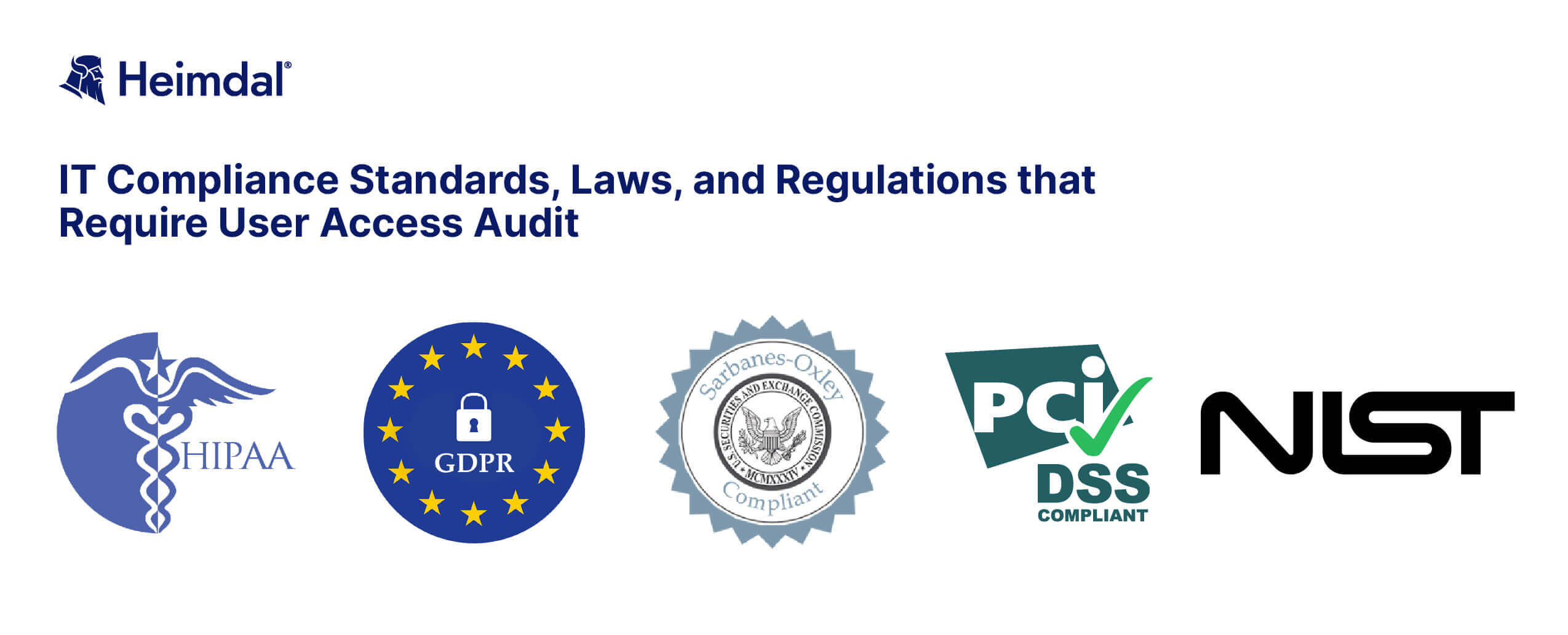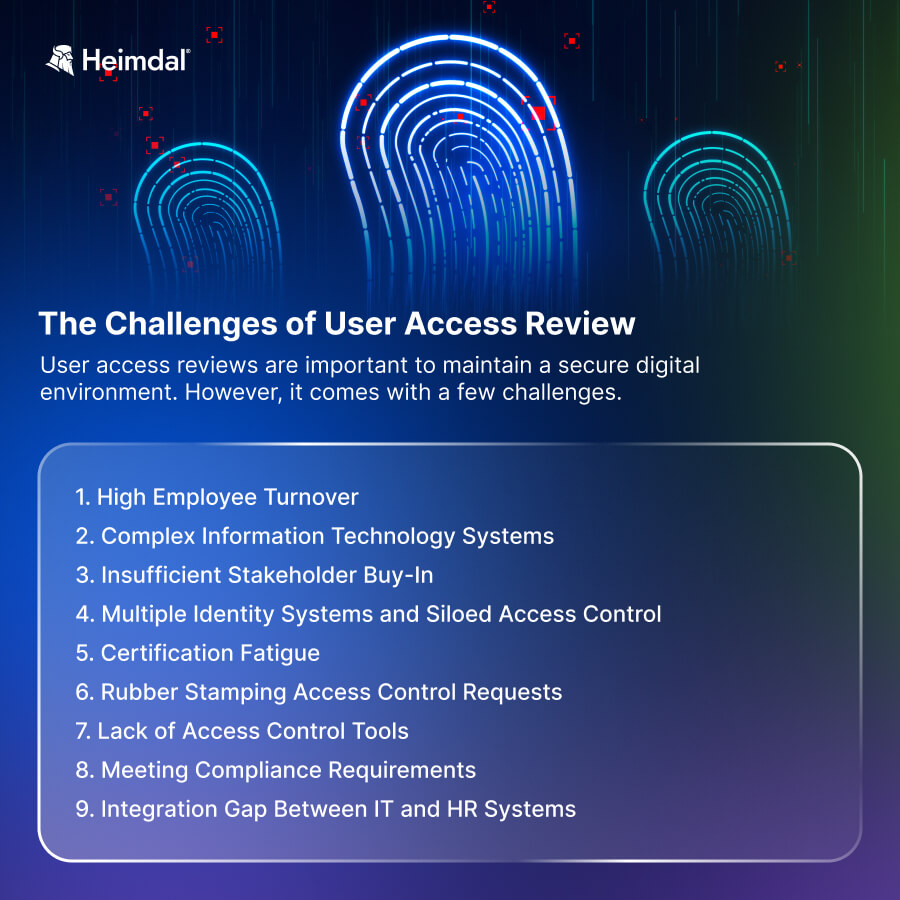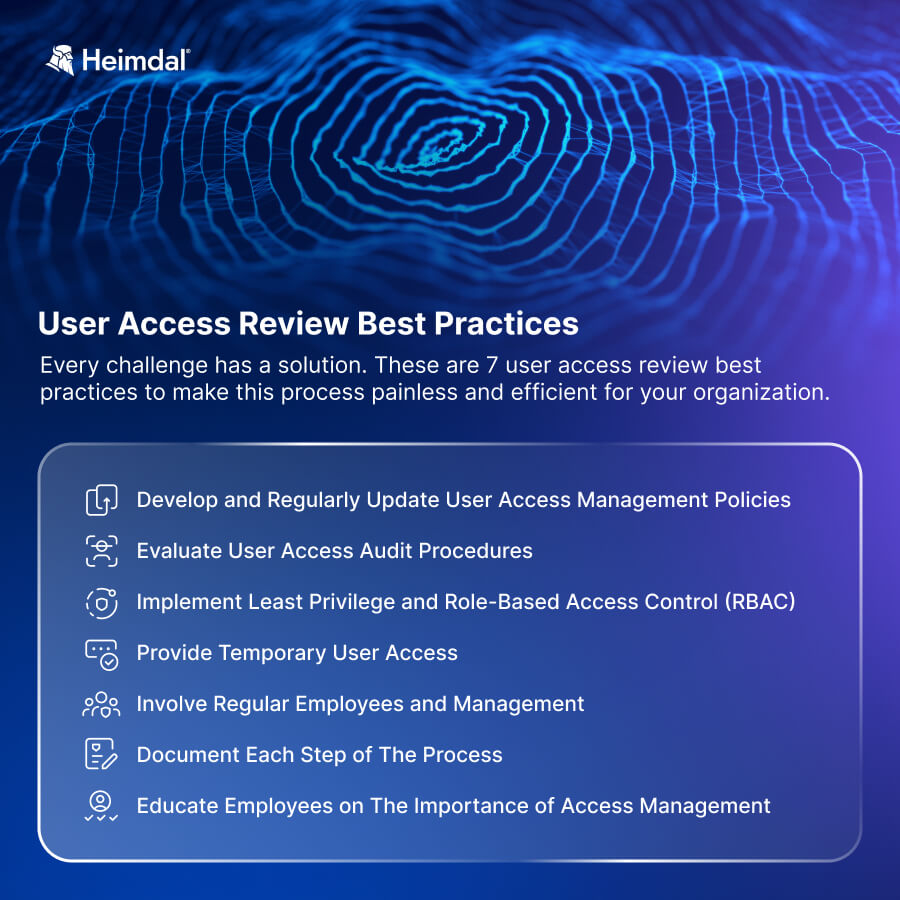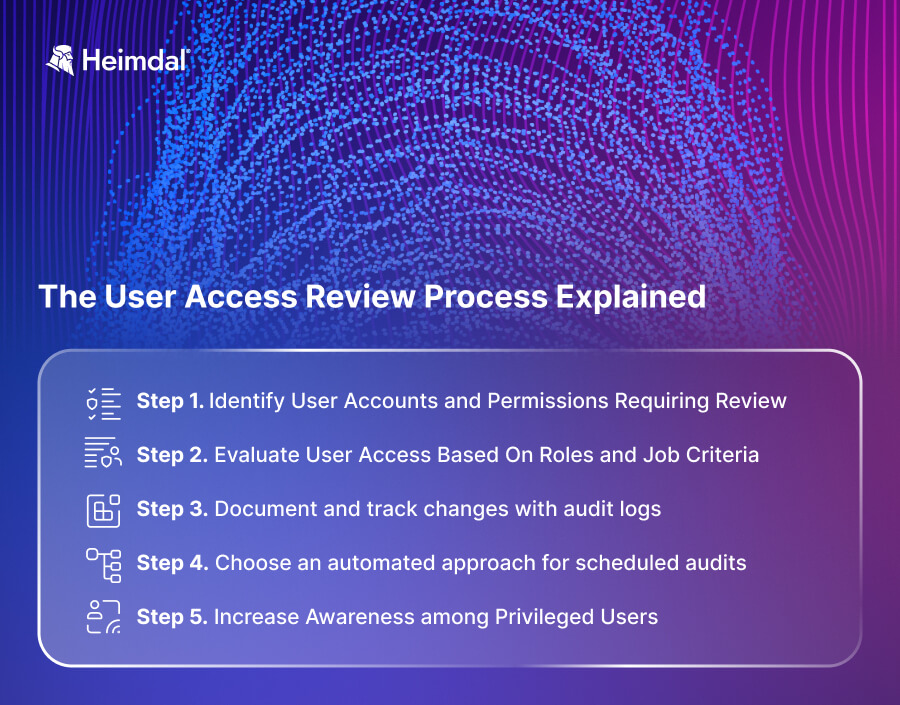

Managing user access is crucial for security and compliance with IT standards. However, lacking effective user access review knowledge leads to ongoing challenges in safeguarding sensitive data.
This article covers everything you need to know about user access review, including:
The user access review process (UAR) refers to periodically reviewing each user’s privileges and access rights to all data and apps within an organization. It’s also known as access audit, entitlement review, account recertification, or account attestation and is an important component of any organization’s Identity and Access Management (IAM) strategy.
It is important to note that here, the term “user” doesn’t only mean a company’s employees but everyone whom your organization has any type of collaboration with, including:
User access review ensures that a user’s access rights to an organization’s data and systems are appropriate for their role and tasks — and they don’t have access to any sensitive data that is not meant for their role.
The goal is to lessen security risks by restricting access to critical data and assets.
Also, despite incorporating security measures such as the Principle of Least Privilege, Zero Trust Policy, and Granular Access Management, skipping the access review process is not recommended.
According to the “ Privileged Access Management in the Modern Threatscape ” report, 74% of data breaches originate from the misuse of privileged accounts.
Privileged accounts are those that have more access rights to a computer system or network.
These accounts, generally assigned to sysadmins or IT professionals, have administrative privileges — allowing them to do crucial tasks, including adjusting settings, installing software, accessing sensitive data, and controlling other user accounts.
Due to their extensive privileges, these accounts make ideal targets for cybercriminals, which leads to risks such as:
So, robust security measures, such as regular user access reviews, are required to prevent unauthorized access and misuse — minimizing cybersecurity risks and benefiting organizations by:
User access reviews are crucial for both security and operational efficiency. They help prevent security risks by ensuring that users don’t have more access than they need for their roles. This not only protects against potential breaches but also ensures that employees have the right tools for their jobs without unnecessary access.
Bogdan Dolohan, Head of Technical Support, Heimdal®
Depending on your industry and location, user access reviews may be required by regulation. The following are recommendations and mandates for access reviews based on essential security guides and regulations:

User access reviews are important to maintain a secure digital environment. However, it comes with a few challenges, which I’ll talk about in this section.

With frequent employee turnover, tracking access privileges becomes difficult — which leads to a delay in the removal of access. Delayed revocation of access creates security issues because former employees may retain unnecessary access, increasing the organization’s risk to prospective threats.
Many businesses use sophisticated IT infrastructure, making it difficult to identify and audit all access permissions and rights. The complexities of modern IT environments can make it difficult to keep a comprehensive overview of access, increasing the risk of security gaps.
Stakeholders’ lack of support and understanding can hinder the accessibility review process’s thoroughness and efficacy. Inadequate support may result in insufficient resource allocation, thus compromising the comprehensiveness of access reviews and security posture.
Managing access rights independently across systems can lead to inconsistencies, overprivileged accounts, and security risks. Siloed access control raises the danger of illegal access while complicating auditing processes, making it difficult to maintain a cohesive and safe access management system.
Employees may become disengaged as a result of regular participation in various certification processes, which affects the focus on access control reviews. Employee fatigue may cause them to ignore critical components of access reviews, resulting in potential vulnerabilities and security flaws.
Approving access requests without a thorough examination owing to high volume, time restrictions, or limited resources creates a serious security risk. Rubber stamping increases the likelihood of providing too many rights, which contributes to data breaches, insider threats, and regulatory violations.
Organizations may lack visibility into the systems and apps that employees can access, making reviews time-consuming and error-prone. Without effective access control tools, the quality and efficiency of access assessments can be compromised, leaving possible security flaws unaddressed.
Adhering to regulatory limits for safeguarding access permissions is difficult and varies by industry and location. Noncompliance can lead to legal implications and brand damage, stressing the significance of strong access controls in meeting regulatory standards.
Manual reconciliation between IT and HR systems can lead to inaccuracies and inconsistencies in user identities and access rights. Integration flaws can lead to access discrepancies, perhaps allowing illegal access or keeping accounts active after an individual has left the organization.
Every challenge has a solution. So, in this section, I’m sharing with you 7 user access review best practices to make this process painless and efficient for your organization.

As you’ve understood the potential challenges associated with user access reviews and the best practices to overcome them, it’s time to conduct an effective user access review. Here’s how you can do it in 5 simple steps:

A user access review process checklist aims to systematically analyse and optimize user access privileges while guaranteeing security, data integrity, and regulatory compliance.
Clearly define the apps and resources to be audited. This entails explicitly identifying the applications, systems, and resources under assessment. A clearly defined scope improves organization and structure, reducing errors and streamlining activities. Using risk assessment to prioritize high-risk accounts speeds up the review process.
Check the status of access revocation for departed employees/service providers/third party vendors. During regular user access audits, emphasize the status of accounts associated with former workers. Keep a comprehensive log to ensure that their access privileges are terminated accurately and completely.
To reduce the possibility of fraud, implement SOD and the Principle of Least Privilege. To create checks and balances, assign duties and responsibilities to different people or teams. Allow individuals only the minimum level of access necessary to carry out specific job duties.
Access to privileged accounts should be evaluated and monitored at regular intervals. To ensure consistency and avoid human errors, automate the privileged account management lifecycle using defined workflows. Establish expiry dates for privileged accounts and conduct regular assessments to detect unauthorized or abnormal activity.
Identify inconsistencies and anomalies by monitoring and evaluating changes in user access rights. Prioritize the investigation of changes to user accounts, rights, and privileges. Take an active surveillance approach, using advanced tools to monitor system logs, network traffic, and user activity.
Create and distribute the UAR report to stakeholders. The report should summarize the findings, outline highlighted issues, and give a complete analysis of the user access landscape. Share findings and recommendations with IT administrators, security specialists, and higher management.
User Access Review process entails periodically reviewing individual user access rights, whereas RBAC , or Role-Based Access Control, is a security strategy that allows and restricts system access to employees or third party vendors based on their roles within an organization.
This strategy ensures that users have access to the essential data and programs to carry out their job responsibilities. It also reduces the possibility of unauthorized individuals accessing sensitive information or engaging in unauthorized tasks and makes it easier to review and manage user access.
For example, marketing professionals have access to only marketing tools such as web analytics and content management systems (CMS), whereas finance professionals have access to billing systems and accounting software.
User access reviews are important for maintaining the integrity of RBAC. They help ensure that the roles and permissions are still accurate and relevant, preventing issues like privilege creep and ensuring that users have access rights that match their current job requirements.
Bogdan Dolohan, Head of Technical Support, Heimdal®
Beyond access limitation, RBAC shapes the user’s interaction with data by granting specific roles read-only or read/write access — limiting the user’s capacity to execute commands or remove information.
If an employee’s role changes, role group memberships may need to be adjusted accordingly. Adding a user to a role group gives them access to all of the associated permissions, while removing them restricts access.
Temporary access to specific data or programs can be granted for the purpose of completing a task and subsequently revoked.
Conducting user access reviews is an important step in the access management process . This approach helps to reduce cybersecurity risks for your organization by eliminating unnecessary access to key resources and limiting users’ privileges to the minimum required.
Privileged accounts are highly appealing targets for threat actors, and they should be monitored closely. This is where Heimdal® will make a difference for your organization.
Heimdal®’s Privileged Access Management PAM solution is the only tool on the market that automatically de-escalates users’ rights on threat detection and at the same time makes you achieve two vital things: full compliance, being NIST AC-5 and NIST AC-1,6 compliant, and also increased productivity.
Moreover, a cool centralized dashboard will allow your sysadmins to manage access granting efficiently and offer you a complete overview of your users’ activity.